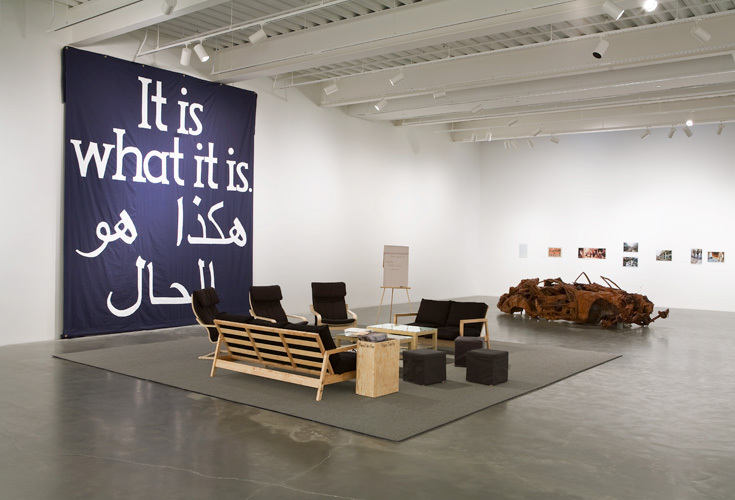Framing dialogical design
Given the need to clear out what I mean by dialogical design, hereby I transcribe part of my master graduation thesis, in which I speak about it.The text is written in the context of the project the other market, to which the interventions mentioned refer to.
DIALOGUE AS A TOOL-SKILL FOR OCCUPYING BORDERS
When framing my position as a designer as a border-practitioner, it seems necessary to speak about the tools and skills necessary to work in this way. For this I look back to my practice, particularly in the last two years, and distil from different projects what seems to be a common denominator: dialogue (or conversation). As Jeremy Deller, who is not skilled in drawing or sculpting, my practice considers triggering dialogues with different constituents around relevant topics (crafts in Riga, skills and exchange in Utrecht, immigration in the Nordoostpolder), understanding the objects in the projects as mere excuses for dialogue (or conversation pieces).
Dialogue is defined by Wikipedia as a conversation or other form of discourse between two or more individuals, though my interest lies more in its greek etymology, composed of dia (through) and logos (speech, discourse), and which reflect the communicative spirit of the word.
In his latest book, Together, Richard Sennett dives deeper into the definition of dialogue, by comparing it to dialectic. Dialectics are of the more simple kind, where people converse and get to certain agreements (synthesis), whereas in dialogue it is not necessary that conversations are resolved in a common ground: though no shared agreements may be reached, through the process of exchange people may become more aware of their own views and expand their understanding of one another. This is very important, for it implies paying great attention to what people do not say, but actually mean, and leads to a better understanding of the other.
In the same book, Sennett attempts to frame the way in which cooperation might be strengthened, as well as the reasons why it is weakened. In this framing, he gives high importance to sets of skills that are usually disregarded: “perhaps you, like me, dislike the phrase ’social skills’, which suggests people good at cocktail party talk or adept at selling you things you don’t need. Still, there are social skills of a more serious sort. These run the gamut of listening well, behaving tactfully, finding points of agreement and managing disagreement, or avoiding frustration in a difficult discussion. All these activities have a technical name: they are called ‘dialogic skills’”. Here, Sennett gives great attention to these skills and, by doing so, opens room for a new type of practice and provides a framework to understand this project.
APPLYING DIALOGICAL DESIGN
As described in the booklet “Occupying Borders”, dialogue serves as one of the most relevant tools for being a border practitioner. This became evident while interacting with the people on the streets during the interventions. If well the cart and the whole setup are made to trigger the conversation, it requires some skills from myself, as a mediator, to keep the dialogue flowing and directed towards desirable paths (although the undesirable paths may be as insightful). As Richard Sennett writes in his book Together, empathy is about truly understanding what the other means, and not only what she or he says, and this became an essential aspect for the dialogues.
Building an idea of the other has been for long time amongst the pretensions of designers in their process, for the main reason that they design for people other than themselves. In traditional product design this was always openly linear, with few real involvement on how the end users actually live. Since some years ago, this has become more open, making the design process more empirical, experiential and participative. This way, the designer can have a (supposedly) 1st hand approach to the situation he is designing for. Here is where some of the perspectives on social design are framed today, yet I think this still implies a sympathetic attitude (that reinforces the neo-colonial position of design). By doing this, designers attempt to be-in-the-position of the other, rather than trying to understand him or her. This attitude (sympathy), as described by Sennett, is opposed to empathy, which is the way in which I attempt to interact with different people in the streets.
When I speak about dialogical design, I do not only refer to a set of skills or a way of working, but it defines my practice in a broader sense. With this, I mean that the dialogue is not only process, but also result; just not a final result, but a series of temporary results that would always loop back in the process (a conclusion we came up with Jeanne van Heeswijk during a conversation). This makes my projects a never-ending process of producing, making things public, reflecting and looping back into production. This never-ending process does not lead to “an outcome”, but to an on-going collection of content, which functions as a radiography of the project in a specific moment.
This demands a special attention to the documentation of the interventions, in which the diversity in form and content of the information will allow for a richer presentation of the collection. I have documented the interventions through pictures, videos and audio recordings. This content will be processed together with a graphic designer, in order to produce pieces that communicate the essence of the actions and the dialogues initiated. But it is the cart itself, together with the objects used in the different situations, the best testimonial of the interventions. Therefore, I can consider the presentation of the project as a collection of objects leftover from the different interventions, in the style of Joseph Beuys’ vitrines. This taps into the power of everyday life objects and situations, which was another starting principle of my project.

